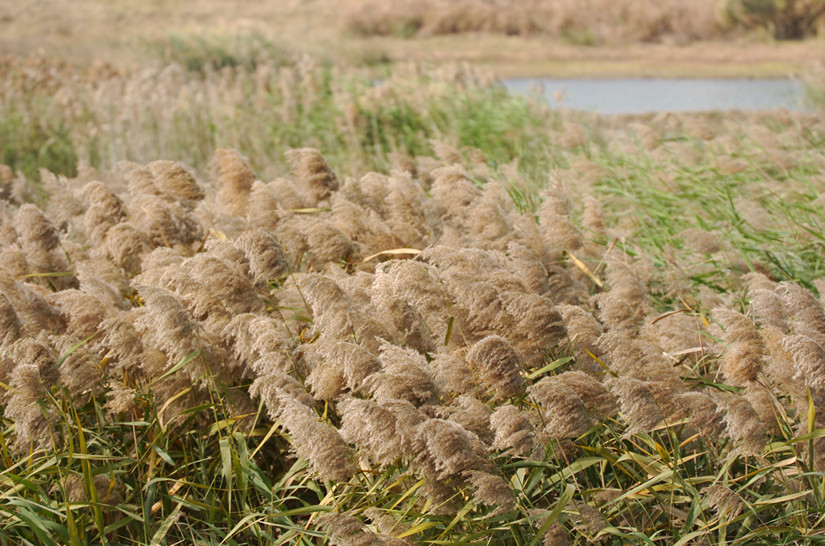December
Phragmites australis

Have you ever dreamt of enjoying a leisurely walk through a bed of golden reed? Visit the Wildside Walk of the Wetland Park, and your dream will come true!
Common Reedgrass is a member of the family Poaceae (i.e. grass). Because of the strong reproducing power of its underground stem, it colonizes coastal area extensively, forming the "reedbed". With a hollow but erected stem, it can grow up to three metres. Autumn and winter are its flowering and fruiting seasons. The purple-reddish panicle grows on its tip. The inflorescence is so light that it will swing and sway in the wind. Under sunshine, the feathery seed becomes dazzling.
Many people find the reeds inspiring. Several writers mentioned it in their works. For instant, French philosopher Blaise Pascal described mankind as a 'thinking reed'.
Common Reedgrass is useful in many aspects. Its root is fibrous and can be used to substitute wood pulp in paper industry. Some people turn it into fencing and bed. In Chinese medicine, its root is believed to have cooling effect on the body.
Common Reedgrass is indispensable to nature too. Reedbed, which displays an extensive root system, improves water quality, like a giant water filtering system which filters chemical and organic pollutants. Wetland is therefore thought as "kidney of the earth". Reedbed also brings life to wetland. It can grow in nutrient-deficient soils. The densely-grown reedbed near the coastal area is an ideal habitat for the waterbirds to hide away from enemies and to nest.